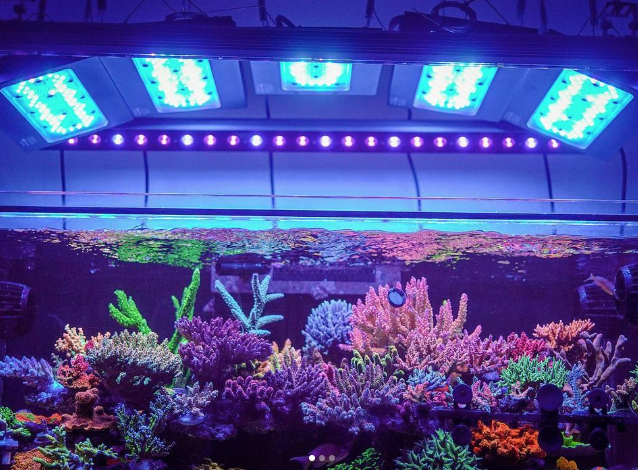A paper has been published in the Journal of Fish Biology titled “The Environmental Impact of Keeping a Tropical Aquarium in Northern Europe.” It was published back in June 2023, first attracting positive attention from the aquarium industry because it found that running an aquarium had less equivalent CO2 emissions than owning a cat or dog.
But now just over a month later its been picked up by mainstream media in a more negative light for tropical fish tanks creating up to 12% of a household’s total CO2 emissions. Having not previously read the paper, we needed to find out more.
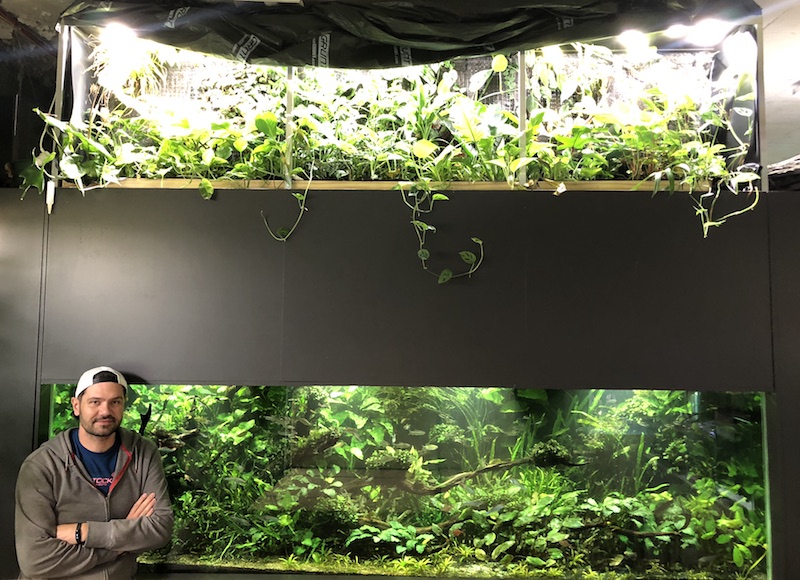
First estimates
The paper has been authored by Willam Bernard Perry, of the Water Research Institute, Cardiff University, Wales, in the UK. Focussing on three sizes of freshwater and marine aquarium, and across three European countries – France, Poland, and the United Kingdom, the paper seeks to provide the first estimates of CO2 emissions produced when running an indoor aquarium.
Three aquarium size examples were referenced – 50, 200, and 400 liters (13, 52, and 106 US gallons,) and using estimates from the UK, depending on size and running conditions, “a tropical aquarium produces an estimated 85.3–635.2?kg of CO2eq per year, equating to 1.6%–12.4% of the UK annual average household CO2 emissions, and uses 156–31,200?l of water per year, equating to 0.2%–30.1% of the UK annual average household water usage.”
We are guessing that the huge variance in the water usage of 156-31,200 l (41-8242 US gallons,) must be the annual use of total water to produce RO water for the 400-liter tank, as that equates to 78 x 100% water changes per year if not. Which is unrealistic. Weekly water changes of just 10% of tank volume using RO product water would be more realistic.
The paper quotes a ratio of 1:5 product to wastewater for RO, and that water was multiplied by a factor of five. So that still assumes 6240 liters/1648 gallons of RO water used for saltwater and topping up per year. With an average reef aquarium evaporating 25 liters or 6-7 gallons per week, or 1300 l/343 gallons per year, that still leaves 4940 l/ 1305 gallons of product water available for salt mixing, which we still feel is a bit on the high side.
The flip side of the high water consumption for an example 400 liter tropical saltwater aquarium goes the other way for electrical consumption, however. “Energy consumption from a real-world system came from a 380?l (100 gallon,) marine aquarium containing a sump and running the following equipment: one heater, two 30?W LED lights, one 8?W LED light, one protein skimmer, one return pump, two wavemakers, and one UV sterilization unit. The lights were on a 9?h cycle, apart from the 8?W LED light, which was run constantly in the refugium, and the heater was set at 24°C.”
Here, we feel that 2 x 30-watt LED lights are underpowered for the average 100-gallon reef aquarium. 2 x 90-watt would be more likely, albeit not run at 100% output. They’ve also factored in a refugium light and UV, which not everyone runs.
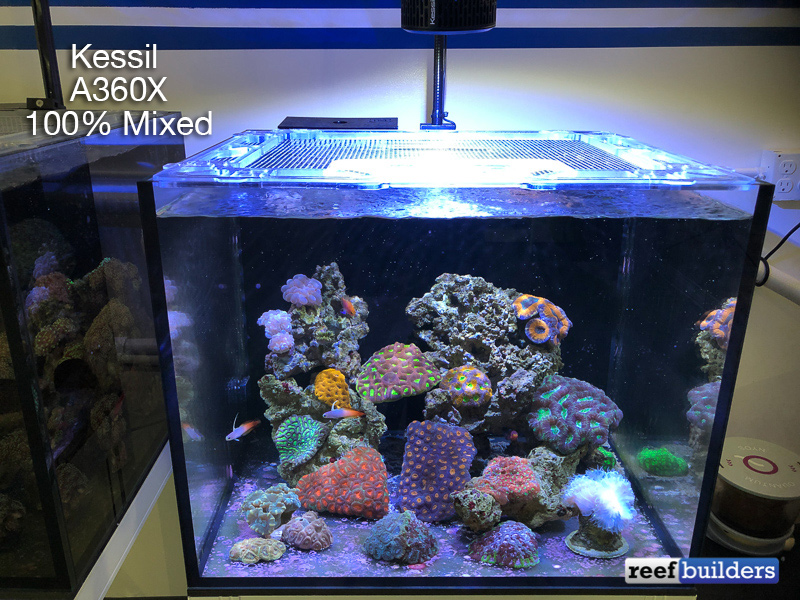
An environmentally conscious pet choice
Perry states, “comparison with the CO2eq of an average-size dog (127–1592?kg of CO2eq per year) or cat (121–251?kg of CO2eq per year), estimated from meat consumption alone, demonstrates that ornamental fishkeeping can be a more environmentally conscious pet choice. In addition, the majority of CO2eq produced from tropical fishkeeping is generated from the energy consumption of aquarium equipment and as more national electricity grids begin to decarbonize, this estimate should decrease.”
According to the paper, four million UK households kept pet fish in 2020, or 14% of the population. And 70% of those fish were tropical, freshwater. Despite cats and dogs not using any electricity for their upkeep, their meaty diets contribute overwhelmingly to their carbon footprint and have been researched and referenced by other authors.
This study of aquariums however goes beyond the obvious, like water and electricity, and in the present study, the environmental impact of tropical aquariums, both freshwater and also assesses the carbon emissions linked with abiotic (water and salt) and biotic (livestock and feed) inputs.
Also factored in was the CO2 from fish transportation ( like shipping Green Chromis from the Philippines,) shipping salt from the Red Sea, the production of fish food from fish meal, and more.
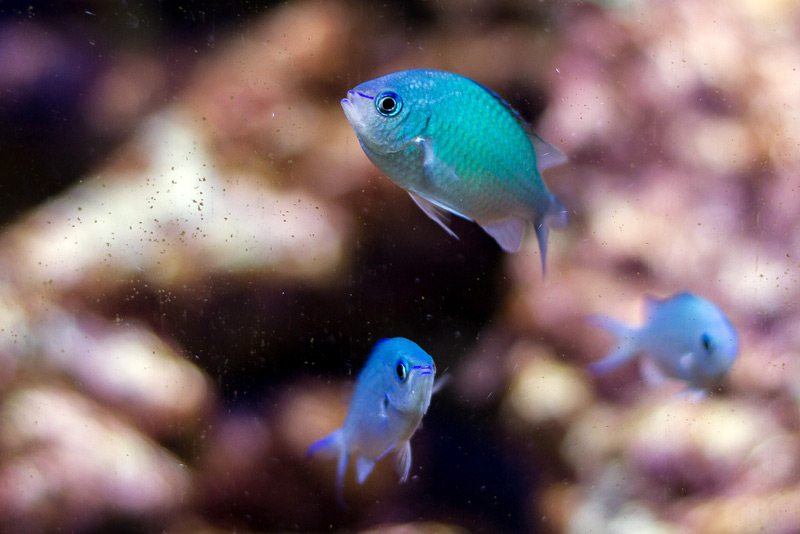
What we think
Most people would never have thought that an electricity and water-hungry hobby like fishkeeping could be a more environmentally friendly option than owning a cat or dog. Better not tell them how many of us have aquariums AND a cat or dog, in that case, as aquarium owners are by our nature animal lovers, and typically have many pets.
The accumulation and calculation of CO2 emissions from every factor of aquarium ownership must be a very difficult task. Although we know intimately how a fish is shipped from tropical seas to closed aquariums in cooler climbs, and every piece of equipment and food item it requires throughout its lifetime, we will leave exactly how it is calculated to the experts.
We are interested however in how the data has been spun two separate ways, depending on the news source. Saltwater aquariums should probably have been assessed separately from tropical freshwater, as we typically use so much more water, electricity, and equipment versus tropical freshwater tanks. A large reef tank has exponentially more CO2 emissions than a small, simple tropical tank.
The variation in tank volume also spins the results massively with annual water usage going from just 156 liters (probably for the 50 liter freshwater tank, using tapwater) to over 31,000 for the 400-liter reef tank on RO water. As we know, a percentage of reefers don’t change their tank water, supplementing it instead, and one reader said that he recycled his fresh tank water (watering terrestrial plants, perhaps?) which may also have a bearing on the results.
Reefkeepers will struggle to lower their power consumption, especially as are already using LED lights and controllable DC pumps. You can grow undemanding corals in a low-tech, lower-energy consumption tank, but if you want to grow the pinnacle of colorful, tabling Acropora you need lots of light and lots of water flow. There is no way around it. Apart from going for a smaller tank which may use half the amount of lights and wave pumps of a larger one, that is.
In the reef aquarium hobby, we also ask ourselves other questions, like which one has the lowest carbon footprint – a maricultured coral grown in the sea, and shipped from Indonesia? Or an inland coral farm based in cooler climbs, which may not have the air miles, but uses salt, water, and electricity to grow their corals? We may be wrong, but polythene fish bags and styrofoam boxes weren’t mentioned either. An aquarium industry staple.
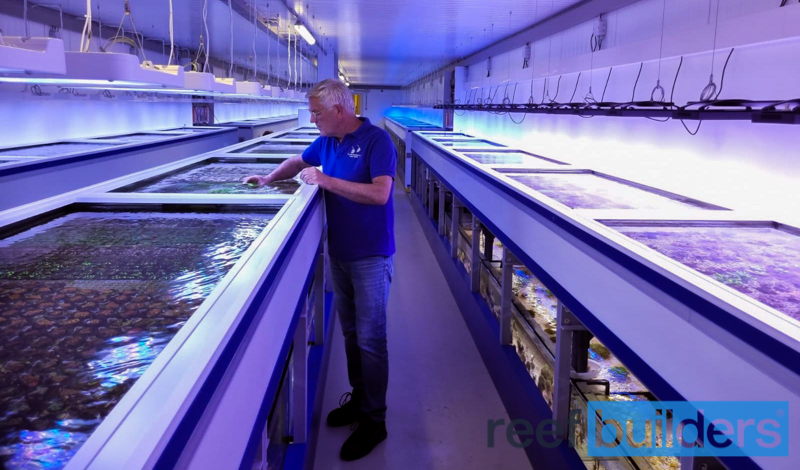
But after four decades of aquarium keeping we tend to take a pragmatic approach to its effect on the planet. Aquarium keeping is not the most ecologically friendly hobby on the planet, nor does it have the smallest carbon footprint. But it is getting better, and is completely scalable. The internet is full of advice on how to save energy and water, both in your tank and your home, and if we absolutely had to, we could all save a few watts here and there, as well as water.
We’re learning how to spawn saltwater fish and corals now too, and already have the tools and the knowledge to keep them alive. So bigger picture, our “hobby” skills, aquariums, and equipment are going to come in really handy one day. And that’s a big plus.
What do you think? Join in the conversation and let us know your thoughts, over on our Facebook page.
You can read the Open Access Research Paper here


